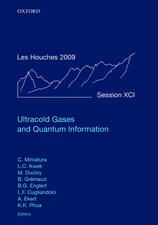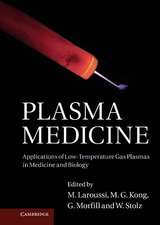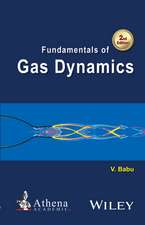Explosive Effects and Applications: Shock Wave and High Pressure Phenomena
Editat de Jonas A. Zukas, William Waltersen Limba Engleză Paperback – 14 noi 2002
Din seria Shock Wave and High Pressure Phenomena
- 15%
 Preț: 651.67 lei
Preț: 651.67 lei - 24%
 Preț: 804.04 lei
Preț: 804.04 lei - 18%
 Preț: 2099.77 lei
Preț: 2099.77 lei - 18%
 Preț: 1111.97 lei
Preț: 1111.97 lei - 15%
 Preț: 645.28 lei
Preț: 645.28 lei - 18%
 Preț: 948.29 lei
Preț: 948.29 lei - 15%
 Preț: 532.38 lei
Preț: 532.38 lei - 18%
 Preț: 1235.25 lei
Preț: 1235.25 lei - 18%
 Preț: 1132.65 lei
Preț: 1132.65 lei - 18%
 Preț: 1228.96 lei
Preț: 1228.96 lei -
 Preț: 397.01 lei
Preț: 397.01 lei - 18%
 Preț: 949.10 lei
Preț: 949.10 lei - 15%
 Preț: 634.32 lei
Preț: 634.32 lei - 18%
 Preț: 1541.47 lei
Preț: 1541.47 lei - 24%
 Preț: 1040.57 lei
Preț: 1040.57 lei - 15%
 Preț: 642.03 lei
Preț: 642.03 lei - 18%
 Preț: 892.90 lei
Preț: 892.90 lei - 20%
 Preț: 560.55 lei
Preț: 560.55 lei - 18%
 Preț: 1390.73 lei
Preț: 1390.73 lei - 18%
 Preț: 947.50 lei
Preț: 947.50 lei - 18%
 Preț: 957.44 lei
Preț: 957.44 lei - 18%
 Preț: 1126.69 lei
Preț: 1126.69 lei -
 Preț: 384.70 lei
Preț: 384.70 lei - 15%
 Preț: 649.39 lei
Preț: 649.39 lei - 18%
 Preț: 1382.21 lei
Preț: 1382.21 lei -
 Preț: 392.21 lei
Preț: 392.21 lei - 15%
 Preț: 596.36 lei
Preț: 596.36 lei - 18%
 Preț: 1554.72 lei
Preț: 1554.72 lei - 18%
 Preț: 1228.29 lei
Preț: 1228.29 lei - 15%
 Preț: 644.30 lei
Preț: 644.30 lei - 18%
 Preț: 891.80 lei
Preț: 891.80 lei - 18%
 Preț: 951.14 lei
Preț: 951.14 lei -
 Preț: 391.79 lei
Preț: 391.79 lei
Preț: 534.82 lei
Preț vechi: 629.20 lei
-15% Nou
Puncte Express: 802
Preț estimativ în valută:
102.35€ • 111.14$ • 85.97£
102.35€ • 111.14$ • 85.97£
Carte tipărită la comandă
Livrare economică 22 aprilie-06 mai
Preluare comenzi: 021 569.72.76
Specificații
ISBN-13: 9780387955582
ISBN-10: 0387955585
Pagini: 433
Ilustrații: XV, 433 p. 67 illus., 1 illus. in color.
Dimensiuni: 155 x 235 x 23 mm
Greutate: 0.62 kg
Ediția:1st ed. 1998. 2nd printing 2002
Editura: Springer
Colecția Springer
Seria Shock Wave and High Pressure Phenomena
Locul publicării:New York, NY, United States
ISBN-10: 0387955585
Pagini: 433
Ilustrații: XV, 433 p. 67 illus., 1 illus. in color.
Dimensiuni: 155 x 235 x 23 mm
Greutate: 0.62 kg
Ediția:1st ed. 1998. 2nd printing 2002
Editura: Springer
Colecția Springer
Seria Shock Wave and High Pressure Phenomena
Locul publicării:New York, NY, United States
Public țintă
Professional/practitionerCuprins
1 Introduction to Explosives.- 1.1. History.- 1.2. Nomenclature.- 1.3. Blasting.- 1.4. Military Uses.- 1.5. Jet Penetrators.- 1.6. Reactive Armor.- 1.7. Explosive Welding.- 1.8. Wave Shaping and Lenses.- 1.9. Conclusions.- 1.10. Problems (Hints and Solutions).- References.- 2 Explosives Development and Fundamentals of Explosives Technology.- 2.1. Introduction.- 2.2. Nomenclature.- 2.3. The Nature of Explosions.- 2.4. What Are Explosives?.- 2.5. A Short History of Explosives.- 3 Shock Waves; Rarefaction Waves; Equations of State.- 3.1. Introduction.- 3.2. Notation and Units.- 3.3. List of Symbols.- 3.4. Shock Waves.- 3.5. Rarefaction Waves.- 3.6. Reference Frames.- 3.7. Sharp Shocks and Diffuse Rarefactions.- 3.8. Transmission and Reflection of Waves at Interfaces.- 3.9. The Shock Tube.- 3.10. Detonation.- 3.11. Phase Changes.- 3.12. Hydrodynamics and Thermodynamics.- 3.13. Equations of State.- 3.14. Equations of State for Mixtures.- 3.15. The Adiabatic Gamma, the Griineisen Gamma, and the Fundamental Derivative.- 3.16. Problems (Hints and Solutions).- References.- 4 Introduction to Detonation Physics.- 4.1. Nomenclature.- 4.2. The Simple Model.- 4.3. The Jump Equations.- 4.4. The Detonation ProductP—VIsentrope.- 4.5. Detonation Velocity and Density.- 4.6. TheC—JState.- 4.7. The Detonation ProductP—uHugoniot.- 4.8. Detonation Velocity and Charge Diameter.- 4.9. Conclusion.- References.- 5 The Chemistry of Explosives.- 5.1. Background.- 5.2. Conventional Explosives.- 5.3. Nitrate Esters.- 5.4. Nitroarenes.- 5.5. Nitroalkanes.- 5.6. Nitramines.- 5.7. Heterocyclic Explosives.- 5.8. Energetic Salts.- 5.9. Composite Explosives.- 5.10. Liquid Oxidizers and Explosives.- 5.11. Unconventional Explosives.- References.- 6 Theories and Techniques of Initiation.- 6.1Introduction.- 6.2 Nomenclature.- 6.3. Initiation Theories.- 6.4. Thermal Explosion Theory.- 6.5. Elementary Detonation Theory.- 6.6. Relationships Between Thermal and Shock Initiation Theories.- 6.7. Initiation Mechanisms.- 6.8. Initiation Trains.- 6.9. Conclusions.- References.- 7 The Gurney Model for Explosive Output for Driving Metal.- 7.1. Introduction.- 7.2. Nomenclature.- 7.3. Results of the Gurney Model.- 7.4. Applications of Gurney Analysis.- 7.5. Extensions of Gurney Analysis.- 7.6. Limitations and Corrections in Gurney Analysis.- 7.7. Combination of Gurney with Other Physics.- Acknowledgment.- References.- 8 Hazard Assessment of Explosives and Propellants.- 8.1. Introduction.- 8.2. Basic Precepts of Hazard Testing.- 8.3. Sensitiveness, Sensitivity, and Explosiveness.- 8.4. Stages in Hazard Assessment.- 8.5. Charge Hazard Tests.- 8.6. Electrostatic Sensitiveness.- 8.7. Assessment of the Results of the Tests on Energetic Materials.- 8.8. “Insensitive” High Explosives and Propellants.- 8.9. System or Weapon Tests for IM.- Acknowledgment.- References.- 9 Safe Handling of Explosives.- 9.1. Explosive Safety.- 9.2. Sensitivity Testing.- 9.3. Thermal Stability.- 9.4. Case History of an Ammonium Nitrate (AN) Emulsion Accident.- 9.5. Thermal Stability of Organic Explosives.- 9.6. Toxicity of Explosives.- References.- 10 Demolitions.- 10.1. Introduction.- 10.2. Explosively Formed Projectiles.- 10.3. Wall Breaching.- 10.4. Bridge Demolition.- 10.5. Explosive Ordnance Disposal.- References.











